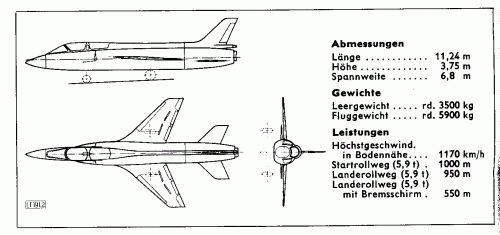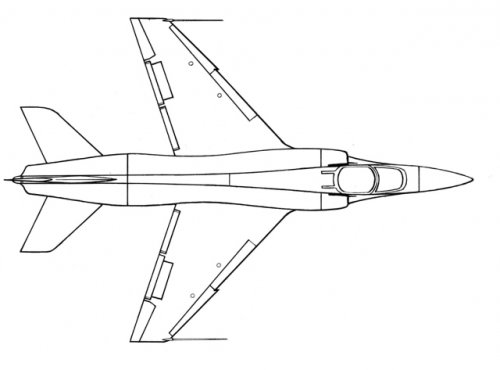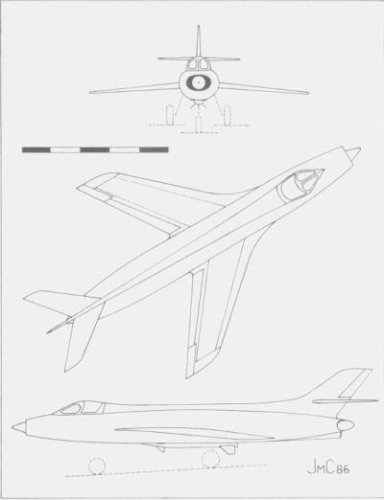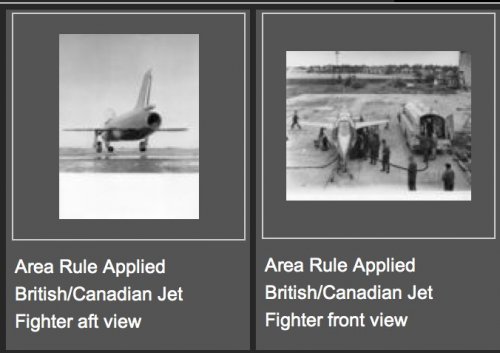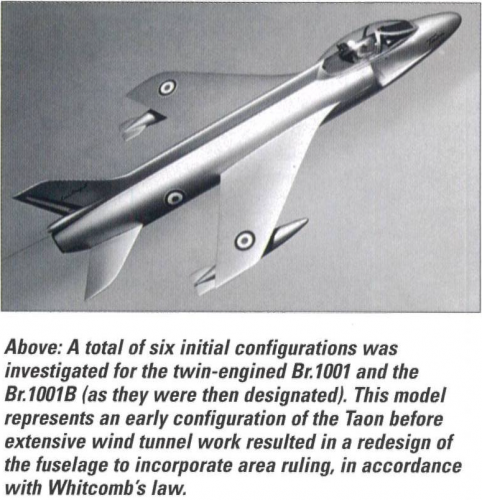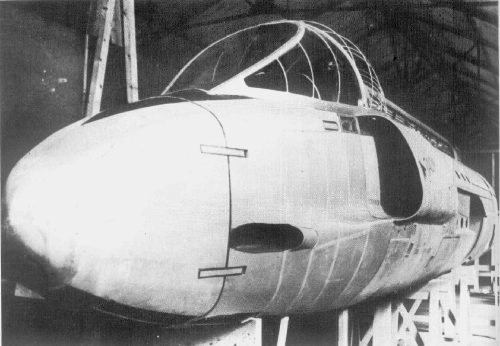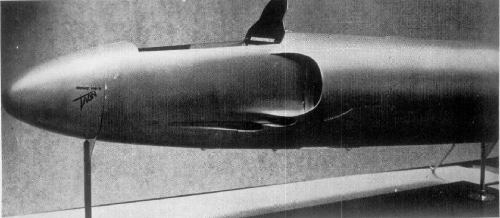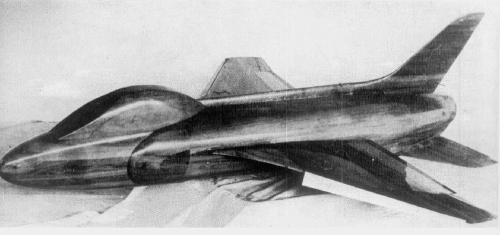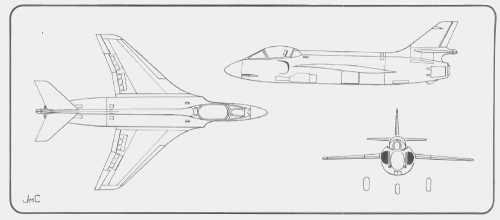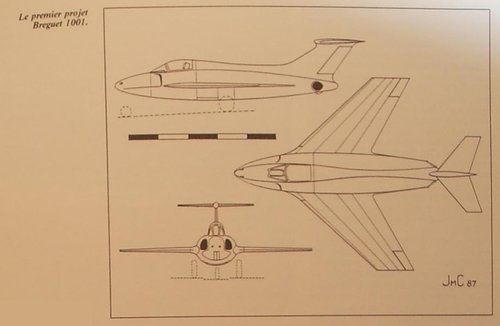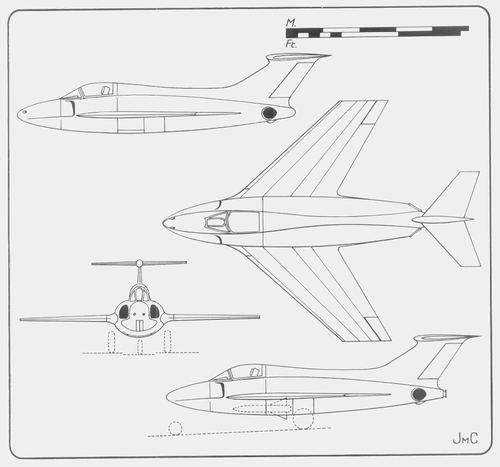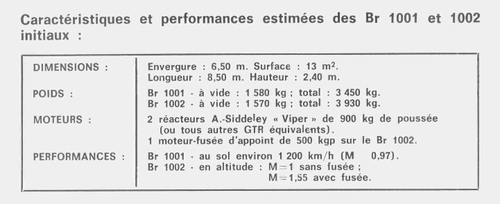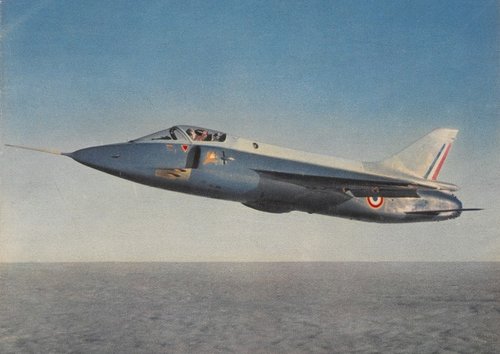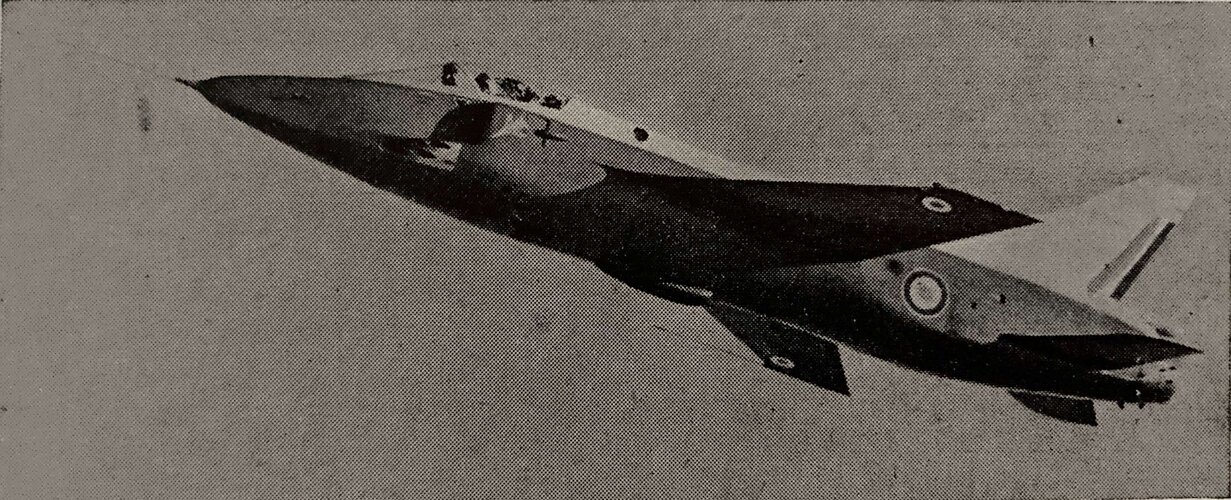- Joined
- 22 January 2006
- Messages
- 3,963
- Reaction score
- 1,349
From "Les Avions de Combat Français 1944-1960" by Jean Cuny. Docavia. Editions Lariviere.
From 1952, two tiny twin jet fighters were studied simultaneously at Breguet:
Br.1001 attack fighter
Br.1002 interceptor
The Br.1002 was not favoured by the Armee de l'Air and was rejected from its early development stage.
The Br.1001 went ahead and won the Avion Tactique Léger competition from June 1951.
Two examples were ordered in 1954 plus one more for the Navy. That year the competition name was changed to "Appareil d'assault et chasse à basse altitude" and was transformed into a joint program between the Air Force and Navy.
A single engined version was developed to NATO attack fighter competition. (Br. 1001B)
The twin engined aircraft were redesignated Br.1100 and Br.1100M in 1955 and the single engine variant was redesignated Br.1001.
The Br.1100 first flight toke place in March 1957 but suffered poor performance. Redesign was suggested but it was decided instead to cancel the program at the end of 1957.
The second aircraft, Br 1101 with reinforced structure, was never completed.
The Br.1100M was flown in November 1957 but was also cancelled for the same reasons given by the Air Force.
The Br.1001 Taon was flown in October 1957 against the Dassault Etendard IV and Fiat G91 but the Italian aircraft was selected the winner in January 1958.
In March 1958, a Br.1001 development, the Br.1003 was selected as the French contender for the NATO second generation attack fighter competition. In November 1958 the Br.1003 was matched to a new wing and became the Br.1005. Breguet estimated the first series aircraft to reach operational units from 1962 but NATO second generation program was abandoned in 1959 so Br.1005 was also cancelled.
The naval versions never advanced beyond the drawing board. Br.1003M was a navalised Br.1003 which was in development from May 1958 when the Navy choose the navalised Etendard IV. The Br. 1004 was a single engined (Atar 101) Br.1003M development as a contender to Dassault's Etendard IVM offer but it arrived too late to change the Aéronavale decision.
From 1952, two tiny twin jet fighters were studied simultaneously at Breguet:
Br.1001 attack fighter
Br.1002 interceptor
The Br.1002 was not favoured by the Armee de l'Air and was rejected from its early development stage.
The Br.1001 went ahead and won the Avion Tactique Léger competition from June 1951.
Two examples were ordered in 1954 plus one more for the Navy. That year the competition name was changed to "Appareil d'assault et chasse à basse altitude" and was transformed into a joint program between the Air Force and Navy.
A single engined version was developed to NATO attack fighter competition. (Br. 1001B)
The twin engined aircraft were redesignated Br.1100 and Br.1100M in 1955 and the single engine variant was redesignated Br.1001.
The Br.1100 first flight toke place in March 1957 but suffered poor performance. Redesign was suggested but it was decided instead to cancel the program at the end of 1957.
The second aircraft, Br 1101 with reinforced structure, was never completed.
The Br.1100M was flown in November 1957 but was also cancelled for the same reasons given by the Air Force.
The Br.1001 Taon was flown in October 1957 against the Dassault Etendard IV and Fiat G91 but the Italian aircraft was selected the winner in January 1958.
In March 1958, a Br.1001 development, the Br.1003 was selected as the French contender for the NATO second generation attack fighter competition. In November 1958 the Br.1003 was matched to a new wing and became the Br.1005. Breguet estimated the first series aircraft to reach operational units from 1962 but NATO second generation program was abandoned in 1959 so Br.1005 was also cancelled.
The naval versions never advanced beyond the drawing board. Br.1003M was a navalised Br.1003 which was in development from May 1958 when the Navy choose the navalised Etendard IV. The Br. 1004 was a single engined (Atar 101) Br.1003M development as a contender to Dassault's Etendard IVM offer but it arrived too late to change the Aéronavale decision.

